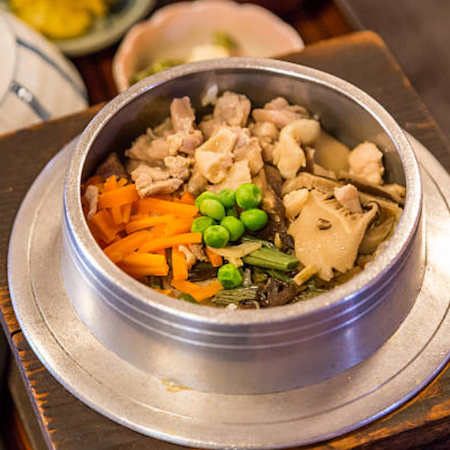
Matsutake Gohan Recipe - Authentic Japanese Autumn Dish
Share
Matsutake gohan, a revered dish in Japanese cuisine, epitomizes the essence of autumn. The recipe centers around matsutake mushrooms, highly prized for their distinctive aroma and flavor, which are at their peak during the fall season. Historically, matsutake mushrooms were so cherished that they were often reserved for the Japanese imperial family and the aristocracy. This rare and exotic mushroom is central in this dish which is not just a meal but a celebration of seasonal change, embodying the deep connection between Japanese culture and the natural world. Today, matsutake gohan is commonly enjoyed during special occasions and family gatherings, serving as a reminder of nature's transient beauty.
Tradition and Health in Japanese Cuisine

Matsutake gohan is traditionally consumed during the autumn months when matsutake mushrooms are freshly available. The timing is crucial, as these mushrooms lose their unique aroma quickly after being harvested. In Japan, the arrival of matsutake season is eagerly anticipated, and their inclusion in meals signifies the beginning of fall. The dish is not only a culinary delight but also holds a ceremonial place at seasonal festivals and is a popular gift, symbolizing respect and good fortune.
Health-wise, matsutake gohan offers several benefits. Matsutake mushrooms are known for their high protein content and low-calorie count, making them a beneficial addition to any diet. They are also rich in vitamins B and D, dietary fibers, and essential amino acids, which support immune system function and overall health. For those seeking a soy-free alternative to traditional matsutake gohan, a simple substitution can be made by replacing soy sauce with coconut aminos, which offer a similar umami flavor without the soy. This modification allows everyone to enjoy the rich, earthy flavors of this traditional Japanese dish, regardless of dietary restrictions.

What you'll need:
- 2 cups short-grain Japanese rice
- 200 grams matsutake mushrooms, cleaned and thinly sliced
- 3 cups dashi stock
- 2 tablespoons soy sauce or coconut aminos
- 2 tablespoons sake
- 1 teaspoon salt
- 1 piece of kombu (dried kelp), about 5cm
- Mitsuba (Japanese parsley) for garnish, optional
How to Make it:
-
Prepare the Rice:
- Rinse the rice under cold water until the water runs clear. Drain and set aside to dry for about 30 minutes.
-
Prepare the Mushrooms:
- Gently wipe the matsutake mushrooms with a damp cloth to remove any dirt. Avoid washing them directly under water to preserve their flavor. Slice them into thin strips.
-
Season the Stock:
- In a pot, combine the dashi stock, soy sauce, sake, and salt. Add the piece of kombu and let it soak for about 30 minutes.
-
Cook the Rice:
- Remove the kombu from the pot and bring the seasoned stock to a boil. Add the rice and return to a boil. Then, reduce the heat to low, cover, and simmer for 20 minutes.
-
Add the Matsutake:
- After the rice has cooked for 20 minutes, quickly open the lid and scatter the sliced matsutake mushrooms on top of the rice. Do not stir. Cover again and cook for an additional 10 minutes.
-
Let it Steam:
- Turn off the heat and let the rice sit, covered, to steam for another 10 minutes. This helps the flavors to meld and the rice to finish cooking perfectly.
-
Serve:
- Gently fluff the rice and mushrooms together. Be careful not to mash the rice grains. Serve hot, garnished with mitsuba if using.
As you savor the distinct flavors and aromas of Matsutake Gohan, you're not just enjoying a meal, but partaking in a storied tradition that celebrates the bounty of autumn. This dish brings together the delicate textures of Japanese rice with the fragrant, earthy undertones of matsutake mushrooms, making it a heartwarming culinary experience. Whether it's a festive gathering or a quiet, reflective meal at home, Matsutake Gohan is more than just food—it's a cherished ritual that honors the changing seasons and brings a touch of Japanese culture to your table. Enjoy the deep connection to nature and heritage with each bite of this exquisite, aromatic dish.
